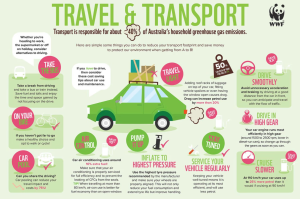1. Why is transport a climate justice issue?
Transportation justice is about making sure everyone has fair and equal access to transport while also protecting the environment. This means not only cutting down on harmful emissions but also making it easier for all communities to access essential services and opportunities. The transport needs of regional or remote communities are different to suburbs and cities. These differences must also be accounted for in the transformation process. Creating fair and sustainable transport options involves developing different ways to travel, like public buses, safe bike lanes, and continuous sidewalks. These efforts aim to make travel safe, reliable, and less carbon-intensive to improve health and social well-being.
The Latino Climate Justice Framework provides the following steps to improve clean mobility, transport, and shipping include:
- Making neighbourhoods more liveable by building safe, accessible public transport where it’s needed.
- Investing in public transport, especially in areas that don’t have enough options.
- Speeding up safety programmes for pedestrians and cyclists, like Vision Zero programmes.
- Providing funds and incentives for non-car transport programmes, such as congestion pricing and zero-emission zones in cities.
To promote zero-emission transport fairly:
- Supporting global climate justice laws to address the environmental and human rights impacts of mining for EV batteries.
- Providing federal funds to help states and local areas switch to zero-emission buses.
- Creating strategies to make EVs accessible, considering different levels of technology understanding and language needs.
- Building convenient, safe, and affordable electric charging infrastructure, prioritising disadvantaged communities.
- Requiring vehicle manufacturers and truck fleets to switch to 100% zero-emission vehicles by 2035.
- Giving financial support to independent truck owners to help them switch to zero-emission trucks.
- Investing in sustainable transport technology, including public transport, for all communities.
- Expanding incentive programmes to make electric vehicles (EVs) affordable for lower and middle-income buyers.
2. Take action
CSOs can advocate for sustainable transport by collaborating with local authorities to improve public transportation infrastructure, promoting active transportation, lobbying for policy changes, initiating carpooling programs, and supporting green infrastructure projects. They can also work towards cheap public transportation fares, engage local businesses for transit incentives, conduct community surveys to gather feedback and encourage policymakers to implement evidence-based sustainable transportation solutions. By employing these strategies, CSOs play a pivotal role in fostering a shift towards more sustainable and accessible transportation options within their communities.

(Source: Travel and Transport Infographic © WWF-Australia)
Read more:
Public Transport Advocacy Plan (City of Glen Eira)
Separated Cycleways (Bicycle Network)
The Road to Sustainable Transport (International Institute for Sustainable Development)
Transformative roads: Three Brazilian cities towards sustainable transport (City Talk ICLEI)
Towards Net Zero for Transport and Infrastructure (Australian Government)
Transitioning to Electric Vehicles (Western Australia Government)
State Electric Vehicle Strategy for Western Australia (Western Australia Government)
3. Transition your organisation to sustainable transport
Step 1: Establish a sustainable transport team
Employee participation is essential for reducing emissions at the organizational level. This initiative is not a one-time project but a continuous effort that requires changing individual behaviours and lifestyles. Therefore, it’s beneficial to hold meetings with employees to discuss the project’s objectives, explore ways to achieve them successfully and outline how the organization can provide support.
The employees of organisations, regardless of the management position or casual shift workers, must collectively share their ideas and opinions to discuss how it may affect them, issues, and benefits of the reducing emission project. This will provide a chance to see how your employees travel, how they can contribute to reducing emissions and what their ideas are in terms of achieving the positive outcome of the project.
Step 2: Calculate and assess your organisation’s travel carbon footprint
Use a travel and carbon footprint calculator (e.g. sustainable travel or carbon-positive Australia) to assess your organisational greenhouse gas emissions from travel. Involve your team and staff to collate realistic data. This provides valuable insights to identify major carbon sources and formulate effective action plans for carbon reduction. Use a green vehicle guide to understand and calculate your organisational vehicle emissions.
Step 3: Develop a sustainable travel action plan
After assessing your travel carbon footprint, explore sustainable travel options that focus on environmental factors and aim to meet emissions reduction goals for creating effective sustainability initiatives. Incorporate organizational incentives for your team and collaborators, such as financial support for public transport or smart-rider costs, ensuring sufficient and secure bike parking, offering rebates for purchasing electric bikes or cars, facilitating remote work opportunities, and providing bicycles, scooters, or electric bikes for staff’s short trips.
Step 4: Develop a sustainable transport policy
Develop a Sustainable Transport Policy. Include your organisational commitment to reach net-zero emissions, investment in active transport, aims for leadership in low-emissions public transport and transitioning from organisational carbon vehicles to electric vehicles.
Policy guides and templates:
Step 5: Reduce vehicle use
Energy.gov.au suggests reducing the number of car trips and flights as the main way to reduce emissions. This includes getting to work by walking, riding, using public transport, or carpooling.
| Walk | Ride |
| For employees who are living in walking distance. | For employees living within riding distance. The organisation could provide and organise:
|
| Organisations could reward employees for their effort to walk and ride by acknowledging their commitment and achievement in reducing emissions. | |
| Public Transport | Car Pooling/Sharing |
| To encourage the use of public transport, the organisation can offer flexible working hours such as allowing early start/finish or late start/finish to suit public transport timetables.CSOs can reimburse some portion of public transport costs. | Support communication mechanisms that can help team members to coordinate carpooling. E.g. provide space to discuss carpooling interests at staff meetings or create a carpooling chat. |
| Alternative organisational transport | Working from Home |
| Make bicycles, scooters and electric bicycles available for staff to make short trips. | Enable working-from-home opportunities. Travelling outside of peak hours to avoid congestion helps to reduce emissions. |
Step 6: Transition to electric vehicles/ hybrid vehicles
Develop a plan and secure funding to transition your organisational vehicles to Electric Vehicles and/or Hybrid Vehicles.
| Budget |
| Currently, the WA government provides financial support for purchasing Electric Vehicles through a Zero-Emission Vehicle (ZEV) Rebate. The Charge Up Workplace EV Charging Grants support the installation of charging stations for not-for-profit organisations, small and medium businesses, and local government authorities.
Additional information on Grants and Funding is available on the Department of Climate Change, Energy, the Environment and Water website. |
| Invest in Charging Infrastructure |
| EVSE can provide specialised advice and install and supply high-quality Australian Certified EV charging stations. |
Step 7: Monitor and improve
Continue to monitor and discuss challenges, benefits and options to improve sustainable transport.
3. Quick tips
- Walk, ride and catch public transport instead of driving cars to work
- Find and use car-sharing options
- Reduce travel needs by using virtual meetings and working from home
- Provide incentives to your staff to walk, ride and use public transport
- Provide adequate bike parking and charging options
- Transition to electric and hybrid vehicles
- Communicate organisational values of low-carbon transport
- Encourage and/or facilitate car-pooling
- Develop a process to rationalise international and interstate travel for meetings, conferences, etc. Pay for carbon offsets for each flight.
- Locate your operations close to public transport routes for easier access by staff and service users
- Make bicycles, scooters and electric bicycles available for staff to make short trips.
- Participating in car share schemes
Read more
Electric car incentives around Australia
- The RAC article discusses current incentives across Australia states and territories, this gives some insight of current budget/finance assistance information.
- Electric cars exemption: The Australia Taxation Office, ATO provides information on the exemption of car expenses spent on Electric cars for employees.
- The cost to charge electric cars: Your local guide to EV charging cost in WA, Synergy, This article provides information on the cost of charging EV vehicles in domestic households. However, Synergy offers special Plans for this specific case with EV vehicles. Organisations with EV charging systems could have a look at different Power bill options.
Review and reduce flight habits
- Green Baggage. These two resources provide guidance on changing habits and making different choices to make air travel more sustainable.
Offer alternative transport incentives to your staff and clients
- The City Fix, These two resources outline various opportunities and benefits of encouraging staff and clients to use alternative transport options to decrease carbon emissions.
Boost staff public transport use
- WAYLEADR, This resource provides an overview of what organisations can do to make public transport more attractive to their team members.
Audit Resources



